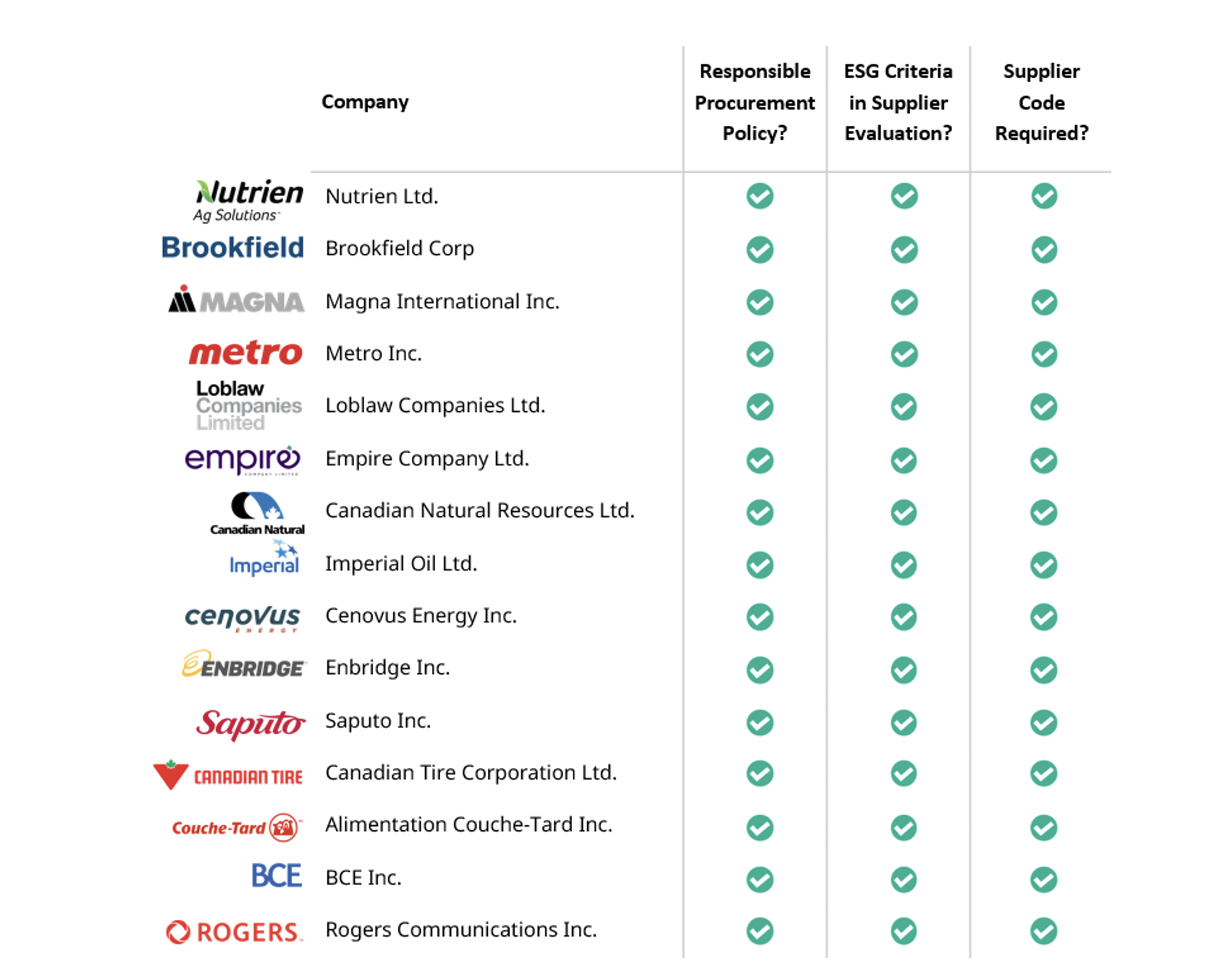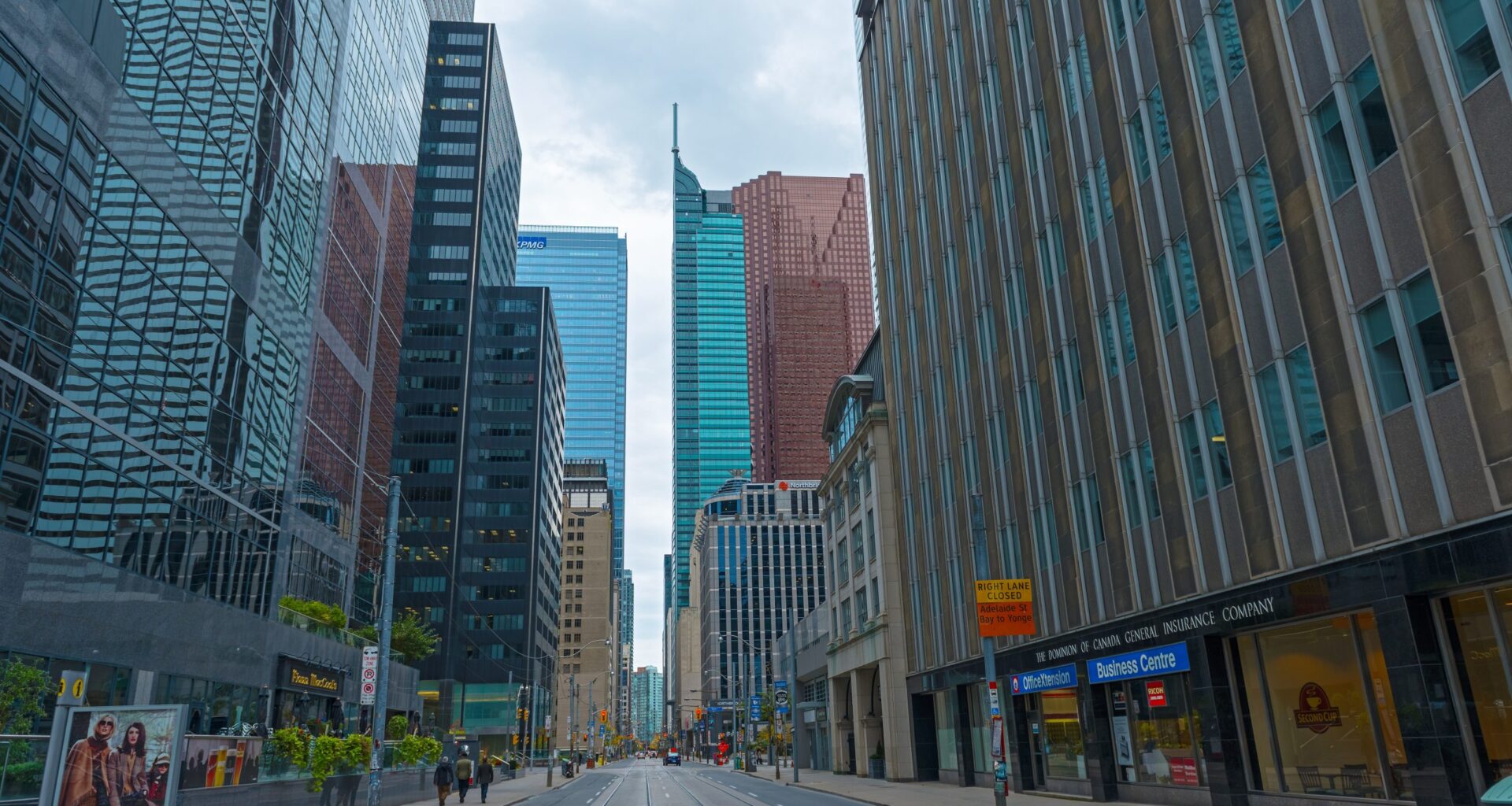In 2023, the Business Development Bank of Canada (BDC) surveyed more than 100 major Canadian buyers and 1,200 suppliers. The results were clear: 82% of large Canadian buyers already required their suppliers to meet at least one ESG (environmental, social or governance) criteria, and more than half of the remaining 18% planned to implement such requirements within two years.
That was before the return of Trump, a new wave of trade tensions, and a looming recession. So we asked ourselves this question: has anything changed for Canadian businesses?
We don’t think so– and here’s why.
Canada’s biggest buyer – the government – still sets the tone
The federal government is by far Canada’s biggest buyer, and despite fiscal tightening, Canada’s sustainable procurement policy remains in place. It requires federal departments and agencies to integrate environmental and social considerations into their purchasing decisions. With Prime Minister Mark Carney expected to uphold this framework, we anticipate continued pressure on suppliers to demonstrate ESG alignment. This has clear trickle-down consequences, including at the provincial and Crown corporation level, for example with the Ontario Education Collaborative Marketplace (OECM), Ontario’s not-for-profit that helps its public sector (schools, municipalities, etc.) buy goods and services more efficiently. We have been helping OECM develop an ESG strategy since 2022,which led to it including 45 questions related to ESGI (ESG and Indigenous relations) in its supplier evaluation methodology in 2024, among other initiatives.
Big corporations are also staying the course
According to our analysis of Canada’s top 15 corporate buyers (shown in the table below) representing an estimated $440 billion in spending, while the depth and maturity of their policies vary, the trend is clear: large Canadian companies are increasingly integrating sustainability into their procurement practices, driven by consumer demand, investor expectations, ESG commitments and reputational risk. Each of the top 15 currently has a sustainable procurement policy in place that includes sustainability criteria in supplier evaluations. It’s never the first or only factor they look at, of course, but it’s a factor. Examples of ESG criteria used in supplier evaluation go from the obvious greenhouse gas emissions and diversity, equity and inclusion practices to waste and water reduction, biodiversity, community investments, risk management and policies.
Sustainability expectations of Canada’s largest corporate buyers
 Source: ESG Global Advisors
Source: ESG Global Advisors
Given the combined purchasing power of these organizations, as well as the robustness and complexity of their supply chains, this is also likely to have ripple effects across the broader Canadian market.
Regulation is driving ESG down the supply chain
Bill S-211, now in its second year of implementation, mandates that companies report on how they are addressing forced and child labour in their supply chains. This is not just a compliance issue; it’s a signal that supply chain transparency is becoming a baseline expectation.
The Canadian Sustainability Standards Board launched its first disclosure standards in January 2025, based on the International Sustainability Standards Board (ISSB) standards. While still voluntary, these standards align with international frameworks and include Scope 3 emissions, which cover indirect emissions from a company’s supply chain and typically represent 90% of companies’ emissions, according to an analysis from McKinsey. Companies that adopt these standards early will be better positioned as disclosure becomes mandatory.
Whether it’s Scope 3 emissions or human rights due diligence, the common thread across these standards is the need for visibility beyond tier 1 suppliers – and in some cases, all the way to raw materials. This is a major shift in how companies manage risk and build resilience.
Global markets are raising the bar
As Canadian companies look to diversify away from the United States, they’re encountering stricter ESG regulations abroad – not just in the European Union, but also in China and other key markets (1,255 ESG policy interventions have been introduced worldwide since 2011, according to ESG Book research in 2023, and 53 jurisdictions are using or preparing to adopt the ISSB standards, representing 57% of global GDP, according to ESG Book research in 2025). Recent research by the Canadian Climate Institute of the top 10 non-U.S. trading partners shows that countries responsible for buying $142 billion of Canadian goods in 2024 are by and large further along than Canada in terms of climate regulation. This global shift is pushing Canadian firms to embed ESG deeper into procurement and vendor selection.
Even in the United States, where ESG has become politically polarized, companies are still moving forward. According to EcoVadis’s 2025 US Business Sustainability Landscape Outlook, 87% of U.S. companies are quietly increasing sustainability investments, even if they’re not promoting them publicly.
Investors, lenders and consumers are watching
Canadian and international investors are increasingly demanding robust ESG disclosures, including supply chain practices. And according to 2025 research by Millani, even though Canadian investors are dialling back communications about their ESG integration activities, that doesn’t mean they’ve stopped. Some Canadian banks and lenders are also requiring ESG information during the lending process. Companies that can’t demonstrate ESG alignment risk losing access to capital or trust.
Recent data for consumers is harder to find, as most studies focus on the impact of tariffs, inflation, et cetera. There was, however, a plethora of studies done on the topic in the past few years, and even as inflation concerns were raging in 2024, according to a PwC survey consumers were increasingly prioritizing sustainability in their consumption practices, as almost nine in 10 (85%) said they are experiencing the disruptive impacts of climate change in their lives.
It’s not just about compliance and winning contracts – it’s about value
Of course, overall investments are down, which affects the sustainability sector as well, and companies may hesitate to invest in ESG right now. But at the risk of repeating ourselves, beyond revenue and risk management, having a robust sustainability strategy can:
reduce costs in the medium to long term (e.g., through energy efficiency or waste reduction)
improve supplier relationships through transparency, clarity and shared sustainability standards
enhance brand reputation through a clear, science-backed sustainability strategy
attract and retain talent by demonstrating purpose and environmental responsibility
In short, ESG isn’t just a reporting exercise – it’s a strategic advantage.
Conclusion: The trickle is now a flow
From winning procurement bids to regulation, investor pressure and global market access, the message is clear: ESG expectations are increasingly cascading down the supply chain. While we understand that tariffs and general uncertainty are probably at the top of everyone’s agenda, suppliers that are able to think long-term and get ahead of the curve will not only future-proof compliance, they’ll win business.
In today’s economy, that’s worth thinking about. If you’re a supplier navigating this landscape, now is the time to act. As someone once said: “Never waste a good crisis.”
Boris Couteaux is principal at ESG Global Advisors and Gur Simar Preet Kaur is an associate. ESG Global offers a comprehensive range of ESG advisory services for companies and investors.
Disclaimer: AI contributed to the creation of this article, but it was guided, reviewed and fact-checked by ESG Global’s human experts. Please note that the content and material provided in this article is for general information purposes only. It is not to be taken or relied upon as legal advice and should not be used for professional or commercial purposes. The content is subject to change based on evolving regulatory reporting requirements.

